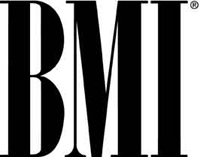
 Two research studies released today (3/31), reveal some interesting trends in how consumers are interacting with music. A study conducted by Port Washington, New York-based market researchers the NPD Group finds that U.S. teens are listening to more music in more formats, but buying and sharing significantly less music. According to NPD, teens acquired 19 percent less music in 2008 than in 2007. CD purchasing fell 26 percent among teens, while paid digital downloads fell 13 percent. 32 percent of teens expressed discontent with the music that was available, while 24 percent of teens cited cutbacks in entertainment spending as another reason for the downturn in downloads. The number of tracks downloaded from peer-to-peer networks fell six percent, while the number of teens “borrowing” music, either to rip to a computer or burn to a CD, fell by 28 percent. NPD’s surveys also noted big jumps in teens’ usage of online listening sources and satellite radio in 2008.
Two research studies released today (3/31), reveal some interesting trends in how consumers are interacting with music. A study conducted by Port Washington, New York-based market researchers the NPD Group finds that U.S. teens are listening to more music in more formats, but buying and sharing significantly less music. According to NPD, teens acquired 19 percent less music in 2008 than in 2007. CD purchasing fell 26 percent among teens, while paid digital downloads fell 13 percent. 32 percent of teens expressed discontent with the music that was available, while 24 percent of teens cited cutbacks in entertainment spending as another reason for the downturn in downloads. The number of tracks downloaded from peer-to-peer networks fell six percent, while the number of teens “borrowing” music, either to rip to a computer or burn to a CD, fell by 28 percent. NPD’s surveys also noted big jumps in teens’ usage of online listening sources and satellite radio in 2008.
“With popular music sites like Pandora, imeem, and MySpaceMusic complementing offerings by terrestrial and satellite radio, more teens may be feeling less compelled to buy music or share it with others,” said Russ Crupnick, Entertainment Industry Analyst NPD. “These declines could be happening due to a lack of excitement among teens about the music available, but it could also reflect a larger shift in the ways teens interact with music.”
 But hold the phone. According to annual mobile music projections for the coming year from BMI, teens and other consumers do like to interact with music through ringback tones. BMI is predicting that ringback tones (those customized songs you hear when you call your mobile subscriber friend) will surpass $235 million in U.S. retail sales during 2009. That’s a 15 percent increase over BMI’s 2008 estimate and a 68 percent increase over 2007. BMI estimates that more than 10 million U.S. subscribers are signed up for ringback-tone services with their wireless carriers. Ringback tones are sold by all major carriers, with the vast majority of tones selling at $1.99. The fee allows the subscriber to use the tone for anywhere from 90 days to 12 months.
But hold the phone. According to annual mobile music projections for the coming year from BMI, teens and other consumers do like to interact with music through ringback tones. BMI is predicting that ringback tones (those customized songs you hear when you call your mobile subscriber friend) will surpass $235 million in U.S. retail sales during 2009. That’s a 15 percent increase over BMI’s 2008 estimate and a 68 percent increase over 2007. BMI estimates that more than 10 million U.S. subscribers are signed up for ringback-tone services with their wireless carriers. Ringback tones are sold by all major carriers, with the vast majority of tones selling at $1.99. The fee allows the subscriber to use the tone for anywhere from 90 days to 12 months.
“We predict that ringback tones will hit a new high in 2009,” said Richard Conlon, Vice President, New Media & Strategic Development for BMI. “Mobile phones are a multi-format device and have become a distribution outlet for entertainment content for the consumer. It is a music use area that we see a continuing growth rate for.”

Category: Featured, Organizations, Publishing, Sales/Marketing


